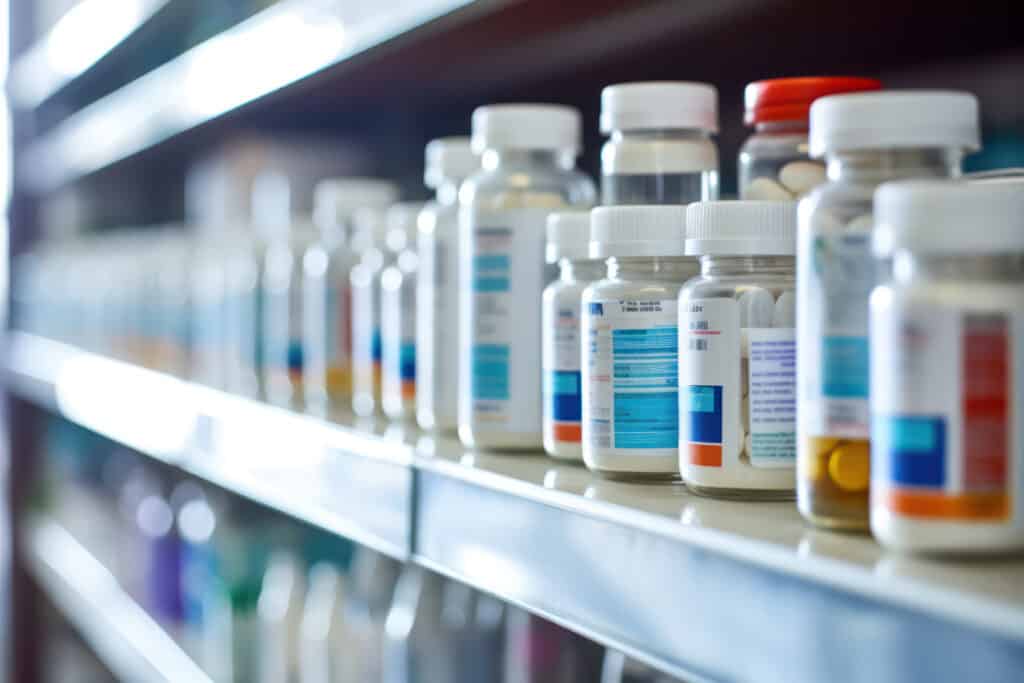Prescription drugs and their continued dominance.
Prescription drug benefits continue to make up a large amount of an employer’s health care spend. It is estimated that 20% to 25% of health care spend is due to prescription medications, and it is estimated that in 2023, specialty medication utilization will increase by 6.1%.
National trends in prescription drug cost
Over the past two years, pharmaceutical expenditures have grown at a substantial rate growing in both utilization and cost.
- In 2021, the total prescription drug expenditures for the United States were approximately $577 billion, up 7.7% over 2020. 1
- In 2022, overall pharmaceutical expenses in the US grew 9.4% from 2021 to a total of $634 billion. 2
- For 2023, drug expenses are expected to increase again by another 6% to 8%, putting pharmaceutical costs close to $700 billion. 2
Of the many factors that drive the overall increase in pharmaceutical spending, the major contributions stem from utilization, price, and the introduction of new drugs to the market. For example, in 2021, utilization grew 4.8% over 2020 and then grew 5.9% in 2022 from 2021. 2 We may still be feeling the ramifications of the COVID-19 pandemic, which caused many individuals to put off health care visits, leading to drops in drug adherence and overall wellness.
Rising specialty medication cost and what to expect
In 2021, the United States spent $577 billion on prescription drugs, with specialty medications alone accounting for approximately half of this total ($285 billion). 3
Even with the cost of specialty medications being as great as it is, which accounts for about half of all medication spend, its utilizers only encompass approximately 1%-2% of patients. 3 Increases in the overall trend will continue for specialty medications that includes conditions such as: 4
- Inflammatory Conditions
- Psoriasis, psoriatic arthritis, Crohn’s disease, and ulcerative colitis.
- Rare Conditions
- Muscular Dystrophy, sickle cell disease, amyloidosis, and hemophilia.
- Cancer
There is help on the way as several biosimilars* are coming to market in 2023 for Humira (adalimumab), which was the top drug in terms of cost in 2021 and 2022. This may help mitigate rising prices in categories with little or no competition, but it remains to be seen how impactful this will be compared to the PBM’s biosimilar and brand strategy.
Since the cost of specialty medications is significant to both the plan and member, it is important that these medications are used and managed properly. It is in every plan sponsors best interest to contact their PBM partner to try and mitigate these costs as best as possible.
*A biosimilar product is a biologic product that is approved based on demonstrating that it is very similar to an FDA‐approved biologic product and has no clinically meaningful differences in terms of safety and effectiveness.5
Sources:
- “National trends in prescription drug expenditures and projections for 2023,” National Institute Library of Medicine, accessed May 05, 2023, https://pubmed.ncbi.nlm.nih.gov/37094296/
- “National trends in prescription drug expenditures and projections for 2022,” National Institute Library of Medicine, accessed May 05, 2023, https://pubmed.ncbi.nlm.nih.gov/37094296/
- “A Primer for Medical Specialty Drug Utilization Management Strategies,” Pharmacy Times, accessed May 05, 2023, https://www.pharmacytimes.com/view/a-primer-for-medical-specialty-drug-utilization-management-strategies
- “2021 + Onward,” Evernorth.com, accessed May 05, 2023, https://www.evernorth.com/drug-trend-report/2021-and-onward
- “LET’S TAKE A CLOSER LOOK AT THE CHARACTERISTICS OF BIOSIMILARS,” Pfizer, accessed May 26, 2023, https://www.pfizerbiosimilars.com/characteristics-of-biosimilars





